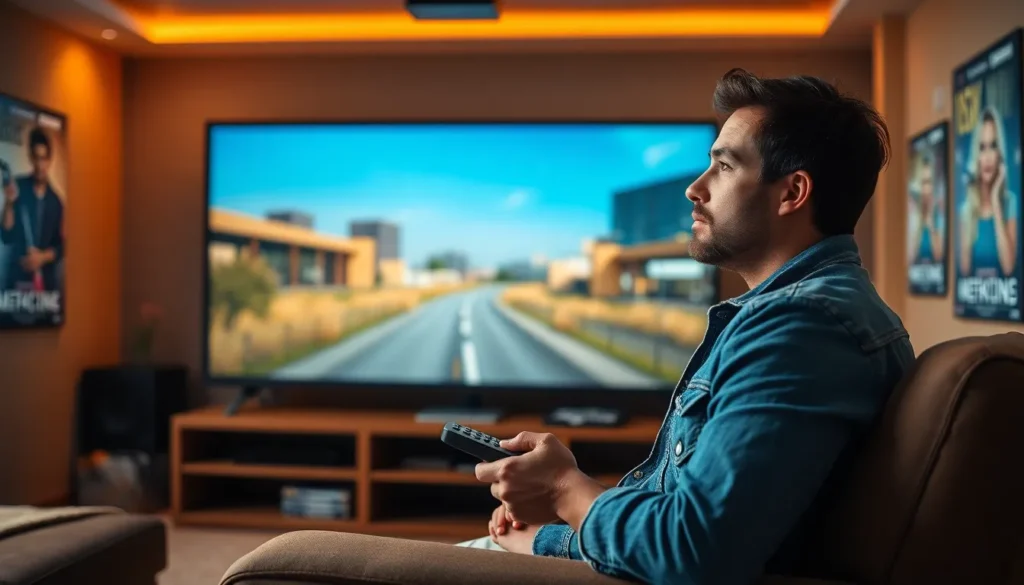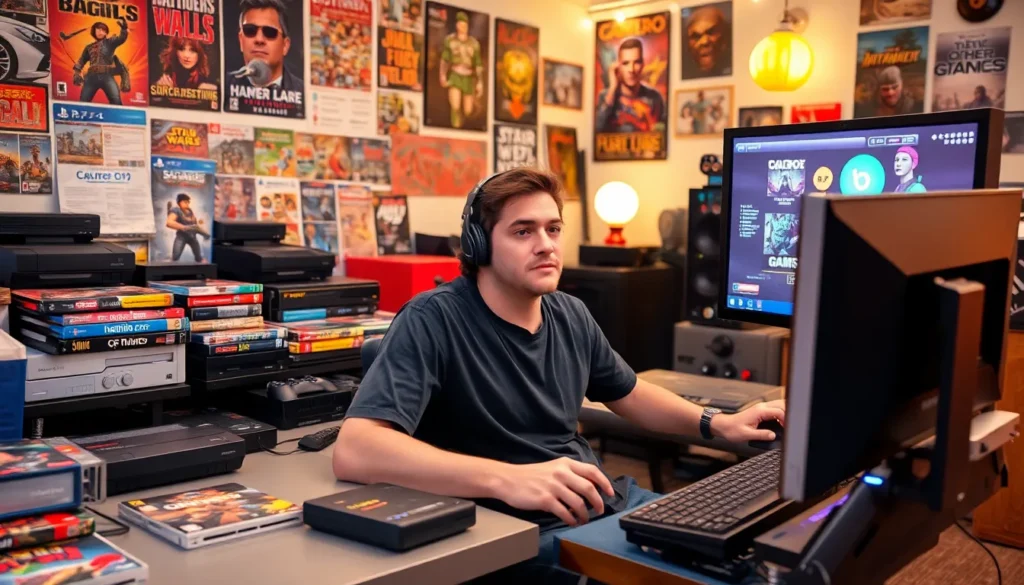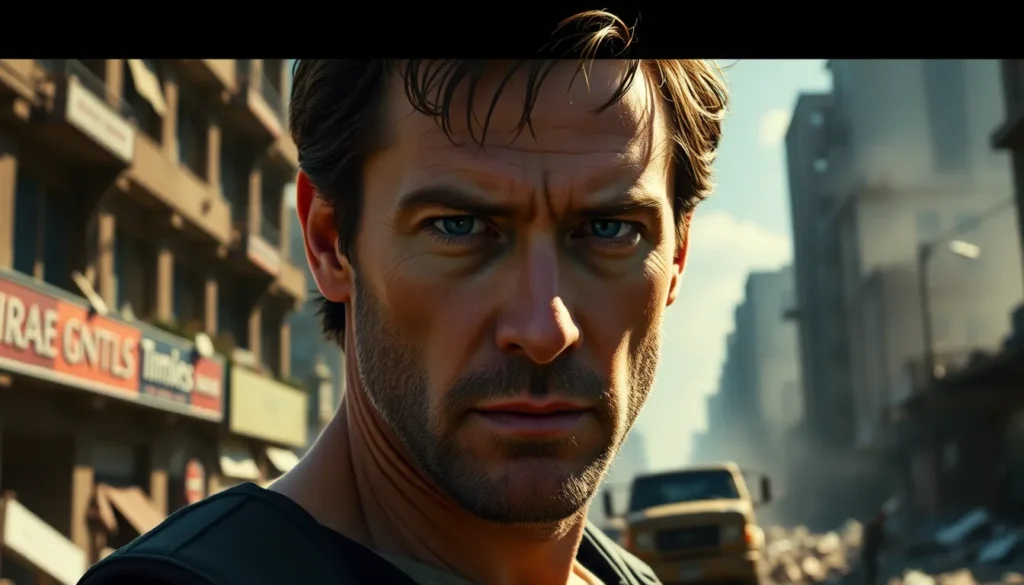Table of Contents
ToggleIn the world of cinema, narration isn’t just a tool—it’s an art form that can make or break a film. Picture this: a gripping tale unfolds, and suddenly a voice pops in, guiding the audience through the twists and turns. Whether it’s the charming wit of a quirky narrator or the ominous tone of a shadowy figure, narration adds a unique flavor to storytelling that keeps viewers on the edge of their seats.
Overview of Movie Narration Style
Narration style in film serves as a critical component of storytelling. It shapes audience perception, enhances emotional engagement, and clarifies plot developments. Various techniques create distinct narration styles that can drastically alter a film’s tone.
Voice-over narration represents one approach. This method gives insights into characters’ thoughts, often revealing motivations and conflicts. Notable films like “Goodfellas” and “The Shawshank Redemption” effectively utilize voice-over to immerse viewers in personal journeys.
On-screen characters narrating their experiences is another way to convey a story. Films such as “Fight Club” and “The Great Gatsby” integrate this technique, allowing characters to guide the audience through their unique perspectives. This creates a direct connection between the character and the audience.
Non-linear narration disrupts traditional storytelling flow, intriguing viewers. Movies like “Pulp Fiction” and “Memento” employ this style, weaving timelines and perspectives. By doing this, filmmakers create suspense and foster deeper analysis of events.
Alternative narration may also evolve through third-person omniscient viewpoints. This style provides an all-knowing narrator who can present multiple perspectives. “The Princess Bride” exemplifies this technique, as it blends narration and dialogue to build layers of meaning.
Each style possesses strengths and can significantly shape cinematic experiences. Together, they outline how narration acts not merely as a voice but as a strategic storyteller, enriching the visual medium.
Types of Movie Narration

Narration styles play a vital role in shaping film narratives. Various methods enhance storytelling and engage the audience effectively.
First-Person Narration
First-person narration immerses viewers in a character’s perspective. This style often captures thoughts and emotions directly from the character’s viewpoint. Films like “The Great Gatsby” and “Trainspotting” utilize this technique to create intimacy. The audience gains insight into the narrator’s motivations and feelings, establishing a strong connection. This approach enhances suspense as it limits knowledge of events outside the narrator’s experience. First-person narration deepens emotional engagement through personal reflections and subjective interpretations.
Third-Person Narration
Third-person narration maintains a level of distance between the audience and characters. This style presents the story through an external observer, offering a broader perspective. In films such as “The Lord of the Rings” and “The Social Network,” viewers witness multiple characters’ experiences. This technique allows for more objective storytelling, covering various plots and subplots. Character development often benefits from this approach, as it provides insights into motivations without bias. Third-person narration helps balance drama without overly influencing audience perception through a singular viewpoint.
Omniscient Narration
Omniscient narration provides an all-seeing viewpoint, offering insights into multiple characters’ thoughts and backgrounds. This technique enhances storytelling by illuminating various threads of the narrative. In “The Princess Bride” and “A Christmas Story,” audiences enjoy a rich tapestry of perspectives. The narrator presents a god-like overview of the plot, guiding viewers through complex scenarios. Omniscient narration gives depth and enhances understanding while allowing for dramatic irony. Moreover, it creates layers of meaning by showing how different characters’ actions impact the overarching story.
Techniques in Movie Narration
Movie narration employs various techniques that shape storytelling and enhance viewer engagement. These methods can significantly alter the audience’s experience of a film.
Voiceover
Voiceover narration provides an intimate glimpse into characters’ thoughts and emotions. This technique enhances storytelling by allowing characters to reveal their inner conflicts, as seen in “Goodfellas” and “The Shawshank Redemption.” Narrators employ unique tones, elevating moments of tension or humor. Audiences connect with the character’s journey through this personal insight. Voiceover serves as a powerful tool for guiding viewers, creating deeper emotional experiences.
Non-linear Storytelling
Non-linear storytelling disrupts traditional narrative sequences, offering a fresh approach to plot development. Films like “Pulp Fiction” and “Memento” exemplify this technique by presenting events out of chronological order. Such a structure encourages viewers to piece together the narrative, fostering engagement and suspense. This method invites audiences to analyze characters’ motivations and events more critically. Non-linear storytelling often leaves lasting impressions due to its complexity and unpredictability.
Impact of Movie Narration Style
Narration style significantly shapes audience engagement and perception. Voice-over narration, for instance, creates an intimate connection, revealing characters’ inner thoughts. This technique enhances moments of tension and humor, allowing viewers to empathize deeply with characters.
Non-linear narration also impacts how audiences process the story. By presenting events out of sequence, films like “Pulp Fiction” and “Memento” challenge viewers to analyze motivations critically. This approach cultivates suspense and requires active participation in understanding the plot.
On-screen character narration adds another layer of engagement, offering unique character perspectives. Characters narrating their experiences can draw viewers closer, as seen in “Fight Club” and “The Great Gatsby.” This method effectively fosters a more personal connection to the storyline.
Omniscient narration provides vast storytelling benefits. An omniscient viewpoint, as illustrated in “The Princess Bride,” allows the audience to access multiple characters’ thoughts and experiences. With this style, filmmakers enrich the narrative by adding depth and dramatic irony.
Different narration styles enhance the emotional journey of films. First-person narration serves to immerse viewers, as seen in “Trainspotting,” effectively enhancing emotional stakes. Third-person narration broadens the scope, allowing for dynamic character development throughout the story.
Each narration technique plays a crucial role in crafting compelling cinema. The strategic use of narration styles enriches our cinematic experiences and keeps audiences engaged in the story. Understanding the impact of these techniques offers insight into the art of storytelling in film.
Narration style is an essential element that shapes the cinematic experience. It serves not just as a storytelling tool but as a means to engage audiences on a deeper emotional level. Each technique brings its unique flavor to the narrative, whether through voice-over insights or the complexity of non-linear storytelling.
By understanding these various styles, filmmakers can craft richer, more compelling stories that resonate with viewers. The art of narration continues to evolve, pushing the boundaries of how stories are told and experienced in film. As audiences grow more discerning, the power of effective narration will undoubtedly remain a cornerstone of successful cinema.







